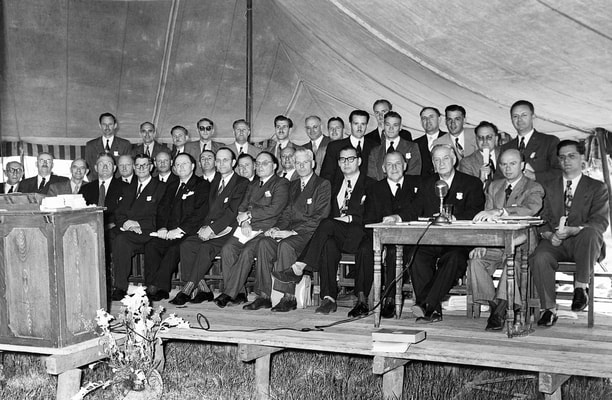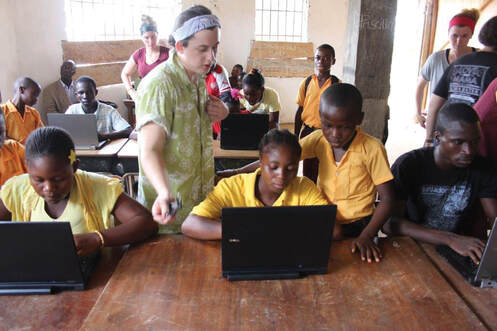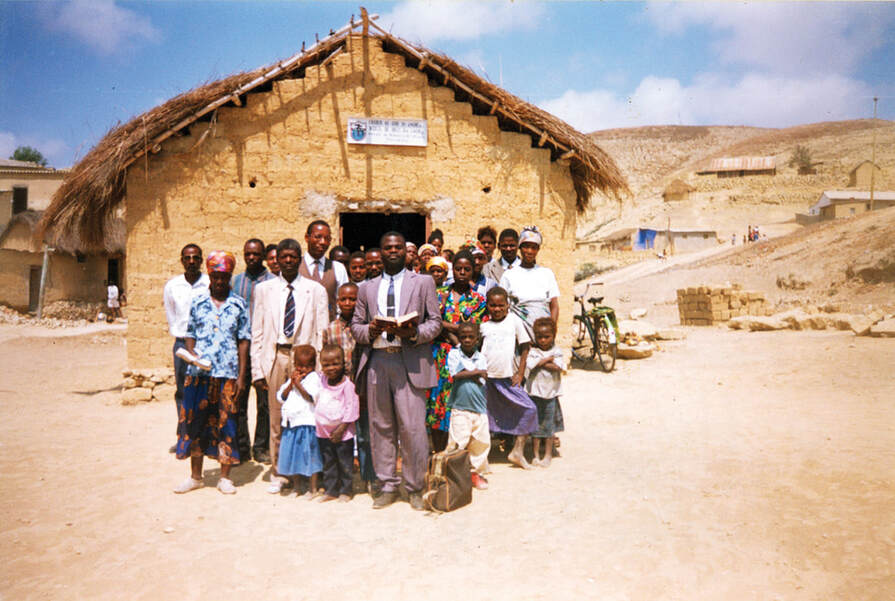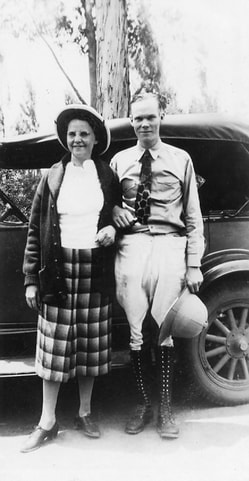AFRICA
David G. Roebuck
THE NAME “Africa” originally referred to land immediately south of the Mediterranean, but has long been used to describe the world’s second largest continent, which lies between the Atlantic and Indian Oceans. Its billion people live in diverse cultures, speak more than a thousand languages, and practice numerous religions. Lamentably, many Africans remain poor with the continuing effects of colonial exploitation, political corruption, tribal and religious warfare, and widespread HIV/AIDS severely depressing their quality and length of life.
Despite the challenges, Africa is a great harvest field. Scholars documenting the growth of Christianity have noted that one-fourth of the world’s Christians now reside in Africa. Reports suggest that the “center of gravity” for Christianity has shifted from Europe to the region surrounding Timbuktu in Mali. Among Christians in Africa, the Church of God has 800,000 members worshiping in 6,500 churches and mission stations in 40 countries.
Despite the challenges, Africa is a great harvest field. Scholars documenting the growth of Christianity have noted that one-fourth of the world’s Christians now reside in Africa. Reports suggest that the “center of gravity” for Christianity has shifted from Europe to the region surrounding Timbuktu in Mali. Among Christians in Africa, the Church of God has 800,000 members worshiping in 6,500 churches and mission stations in 40 countries.
Lillian Trasher: Mother of the Nile
Church of God ministry on the African continent began with Lillian Trasher, who established an orphanage in Assiout, Egypt, in 1911. Trasher was one of many Pentecostal missionaries called to take the gospel to the ends of the earth before there were Pentecostal missions boards to raise financial support and send them. She was baptized with the Holy Spirit and came into the Church of God through a 1909 revival in Dahlonega, Georgia. She did evangelistic work and served at the Elhanan Training Institute and Orphanage that Mattie Perry operated, in Marion, North Carolina. By 1914, Trasher was a credentialed evangelist in the Church of God.
Although Trasher had experience working in an orphanage, she did not originally travel to Egypt to care for children. While working with a missionary couple there, she found herself responsible for an infant whose mother had died. With no one else to care for the child, she determined to do it herself and believe God for provision. Over time, she gained the respect of the Egyptian people and political leaders, so that she was able to survive political and social changes when many other missionaries did not. Now known as the Lillian Trasher Orphanage, by the end of her life, the ministry had cared for and educated more than 1,200 children.
In February 1918, the Church of God Evangel reported that Trasher’s monthly expenses were $260 to care for 80 children. Readers of the Evangel regularly sent financial support and letters of encouragement, and her expressions of gratitude frequently appeared in the publication. With a growing orphanage, however, it was necessary to seek support from many sources. Like other early Pentecostal missionaries who went on their own, she reported to and received funding from the readers of numerous periodicals including, The Bridegroom’s Messenger, The Latter Rain Evangel, The Weekly Evangel, and Word and Witness. With most of her support coming from outside the Church of God, Trasher became an Assemblies of God missionary in November 1919.
J.H. Ingram’s 1936 world tour included Egypt, and while there, he met with Boutros Labib. On a subsequent visit in 1946, Ingram welcomed Labib into the Church of God along with the 23 missions and churches Labib supervised. Missionary D.B. Hatfield arrived in 1947 to assist with the ministry. Church of God ministers in Egypt today remain anonymous due to continuing persecution of Christians there.
Church of God ministry on the African continent began with Lillian Trasher, who established an orphanage in Assiout, Egypt, in 1911. Trasher was one of many Pentecostal missionaries called to take the gospel to the ends of the earth before there were Pentecostal missions boards to raise financial support and send them. She was baptized with the Holy Spirit and came into the Church of God through a 1909 revival in Dahlonega, Georgia. She did evangelistic work and served at the Elhanan Training Institute and Orphanage that Mattie Perry operated, in Marion, North Carolina. By 1914, Trasher was a credentialed evangelist in the Church of God.
Although Trasher had experience working in an orphanage, she did not originally travel to Egypt to care for children. While working with a missionary couple there, she found herself responsible for an infant whose mother had died. With no one else to care for the child, she determined to do it herself and believe God for provision. Over time, she gained the respect of the Egyptian people and political leaders, so that she was able to survive political and social changes when many other missionaries did not. Now known as the Lillian Trasher Orphanage, by the end of her life, the ministry had cared for and educated more than 1,200 children.
In February 1918, the Church of God Evangel reported that Trasher’s monthly expenses were $260 to care for 80 children. Readers of the Evangel regularly sent financial support and letters of encouragement, and her expressions of gratitude frequently appeared in the publication. With a growing orphanage, however, it was necessary to seek support from many sources. Like other early Pentecostal missionaries who went on their own, she reported to and received funding from the readers of numerous periodicals including, The Bridegroom’s Messenger, The Latter Rain Evangel, The Weekly Evangel, and Word and Witness. With most of her support coming from outside the Church of God, Trasher became an Assemblies of God missionary in November 1919.
J.H. Ingram’s 1936 world tour included Egypt, and while there, he met with Boutros Labib. On a subsequent visit in 1946, Ingram welcomed Labib into the Church of God along with the 23 missions and churches Labib supervised. Missionary D.B. Hatfield arrived in 1947 to assist with the ministry. Church of God ministers in Egypt today remain anonymous due to continuing persecution of Christians there.
|
|
 Leaders of the Church of God and Full Gospel Church of South
Leaders of the Church of God and Full Gospel Church of South Africa meet together to sign an amalgamation agreement in 1951.
The Strength of Partnership
Along with sending missionaries, the Church of God has extended our global reach by partnering with already established Pentecostal groups. Among the most significant partnerships is our amalgamation with the Full Gospel Church of South Africa. Church of God members in the United States learned about this extraordinary development through the pages of the Evangel in 1951. General Overseer H.L. Chesser reported to Evangel readers for almost a month as he and World Missions Director J.H. Walker Sr. traveled 4,000 miles by car from the Belgian Congo to Johannesburg, South Africa. In his March 6 letter, Chesser wrote: “Prospects look promising for the accomplishment of unity between the Church of God and the Full Gospel Church of South Africa. We have received a very warm welcome from the brethren we have met, and certainly the two groups have many things in common. The fellowship is grand…. and surely they are brethren of like precious faith.”
Chesser had anticipated the possibility of this trip since May 1949 when he and other Church of God leaders attended the World Pentecostal Conference in Paris. At this second global gathering of Pentecostal denominations, he met J.H. Saayman, who was the assistant general moderator of the Full Gospel Church of South Africa. Hearing that Saayman was on his way to tour the United States, Chesser invited him to visit the Church of God. Saayman’s visit culminated in his joining the Church of God and preaching at the 1950 General Assembly, where delegates gave an offering for building churches in South Africa. The Church of God also appointed Saayman as our missions representative to countries in the southern region of the African continent, including the Union of South Africa.
Seeing the value of a partnership between the Church of God and the Full Gospel Church, Chesser and Saayman began to work toward an amalgamation of the two Pentecostal bodies. Their labor proved successful and led to Chesser and Walker’s trip to Johannesburg to complete the union. At their March meeting, the Executive Council of the Full Gospel Church entered into an agreement with the Church of God. The agreement provided opportunities to support what God was already doing in South Africa and undergird an expansion of ministry in the African countries of Lesotho, Mozambique, Swaziland, Zambia, Zimbabwe, Namibia, Malawi, Mauritius, Reunion, and Madagascar.
The amalgamation agreement signed on March 28, 1951, committed to carry the gospel to all races and ethnic groups in South Africa under the name “Full Gospel Church of God in Southern Africa.” By virtue of their offices, the moderator of the church in South Africa would sit with the International Executive Council at the International Offices in Cleveland, Tennessee, and the general overseer would sit with the Executive Council of the national office in South Africa. Each body agreed to recognize the ministers and members of the other body, and the Church of God received 30,000 new members. Today, our ministry in South Africa includes more than 300,000 members “of like precious faith.”
Reaching the continent of Africa and its diverse peoples remains a global effort. Along with Africans responding to God’s call to take the gospel to other African nations, numerous European countries have sent missionaries to the continent. A few examples include Willy and Inge Ruoff from Germany, S.E. and Joyce Arnold from England, and Peter and Deborah Thomas from Germany, who began as education director in Ghana and has served as field director of West, Central, and East Africa since 2008. With God’s help, the Church of God around the world continues to proclaim the gospel to the ends of the earth.
Along with sending missionaries, the Church of God has extended our global reach by partnering with already established Pentecostal groups. Among the most significant partnerships is our amalgamation with the Full Gospel Church of South Africa. Church of God members in the United States learned about this extraordinary development through the pages of the Evangel in 1951. General Overseer H.L. Chesser reported to Evangel readers for almost a month as he and World Missions Director J.H. Walker Sr. traveled 4,000 miles by car from the Belgian Congo to Johannesburg, South Africa. In his March 6 letter, Chesser wrote: “Prospects look promising for the accomplishment of unity between the Church of God and the Full Gospel Church of South Africa. We have received a very warm welcome from the brethren we have met, and certainly the two groups have many things in common. The fellowship is grand…. and surely they are brethren of like precious faith.”
Chesser had anticipated the possibility of this trip since May 1949 when he and other Church of God leaders attended the World Pentecostal Conference in Paris. At this second global gathering of Pentecostal denominations, he met J.H. Saayman, who was the assistant general moderator of the Full Gospel Church of South Africa. Hearing that Saayman was on his way to tour the United States, Chesser invited him to visit the Church of God. Saayman’s visit culminated in his joining the Church of God and preaching at the 1950 General Assembly, where delegates gave an offering for building churches in South Africa. The Church of God also appointed Saayman as our missions representative to countries in the southern region of the African continent, including the Union of South Africa.
Seeing the value of a partnership between the Church of God and the Full Gospel Church, Chesser and Saayman began to work toward an amalgamation of the two Pentecostal bodies. Their labor proved successful and led to Chesser and Walker’s trip to Johannesburg to complete the union. At their March meeting, the Executive Council of the Full Gospel Church entered into an agreement with the Church of God. The agreement provided opportunities to support what God was already doing in South Africa and undergird an expansion of ministry in the African countries of Lesotho, Mozambique, Swaziland, Zambia, Zimbabwe, Namibia, Malawi, Mauritius, Reunion, and Madagascar.
The amalgamation agreement signed on March 28, 1951, committed to carry the gospel to all races and ethnic groups in South Africa under the name “Full Gospel Church of God in Southern Africa.” By virtue of their offices, the moderator of the church in South Africa would sit with the International Executive Council at the International Offices in Cleveland, Tennessee, and the general overseer would sit with the Executive Council of the national office in South Africa. Each body agreed to recognize the ministers and members of the other body, and the Church of God received 30,000 new members. Today, our ministry in South Africa includes more than 300,000 members “of like precious faith.”
Reaching the continent of Africa and its diverse peoples remains a global effort. Along with Africans responding to God’s call to take the gospel to other African nations, numerous European countries have sent missionaries to the continent. A few examples include Willy and Inge Ruoff from Germany, S.E. and Joyce Arnold from England, and Peter and Deborah Thomas from Germany, who began as education director in Ghana and has served as field director of West, Central, and East Africa since 2008. With God’s help, the Church of God around the world continues to proclaim the gospel to the ends of the earth.
 Lee University student Spencer Smith introduces children at the Phebe Grey Orphanage
Lee University student Spencer Smith introduces children at the Phebe Grey Orphanage in Liberia to the computer lab Lee donated and installed. Rachel Roberts and Barbara
Curran, also Lee students, work in the background with the older students and teachers.
BUILDING THE FUTURE
IN 2015, Lee University launched an initiative to support students in integrating faith and vocation “through ethical action, redemptive service, and responsible citizenship in the community, the church, and the world.” As part of this initiative, Lee committed to make a difference in the lives of children at the Phoebe Grey Orphanage in Liberia by harnessing the talent and passion of every department of the university. The student body raised funds, and in May 2016, a team of students and faculty worked to enhance the library, provide reliable computing, and tackle the challenges of delivering electricity. The team took books for the library and classrooms, school supplies, computers, mosquito nets, bedding, and solar panels among other items; provided teacher training; and performed a community needs assessment in the nearby village. Later visits included building a science lab, offering additional teacher training including workshops on childhood trauma, and assisting in the development of a reliable donor base.
IN 2015, Lee University launched an initiative to support students in integrating faith and vocation “through ethical action, redemptive service, and responsible citizenship in the community, the church, and the world.” As part of this initiative, Lee committed to make a difference in the lives of children at the Phoebe Grey Orphanage in Liberia by harnessing the talent and passion of every department of the university. The student body raised funds, and in May 2016, a team of students and faculty worked to enhance the library, provide reliable computing, and tackle the challenges of delivering electricity. The team took books for the library and classrooms, school supplies, computers, mosquito nets, bedding, and solar panels among other items; provided teacher training; and performed a community needs assessment in the nearby village. Later visits included building a science lab, offering additional teacher training including workshops on childhood trauma, and assisting in the development of a reliable donor base.
David G. Roebuck, Ph.D. is director of the Dixon Pentecostal Research Center, Church of God Historian,
and Assistant Professor of the History of Christianity at Lee University.
and Assistant Professor of the History of Christianity at Lee University.


